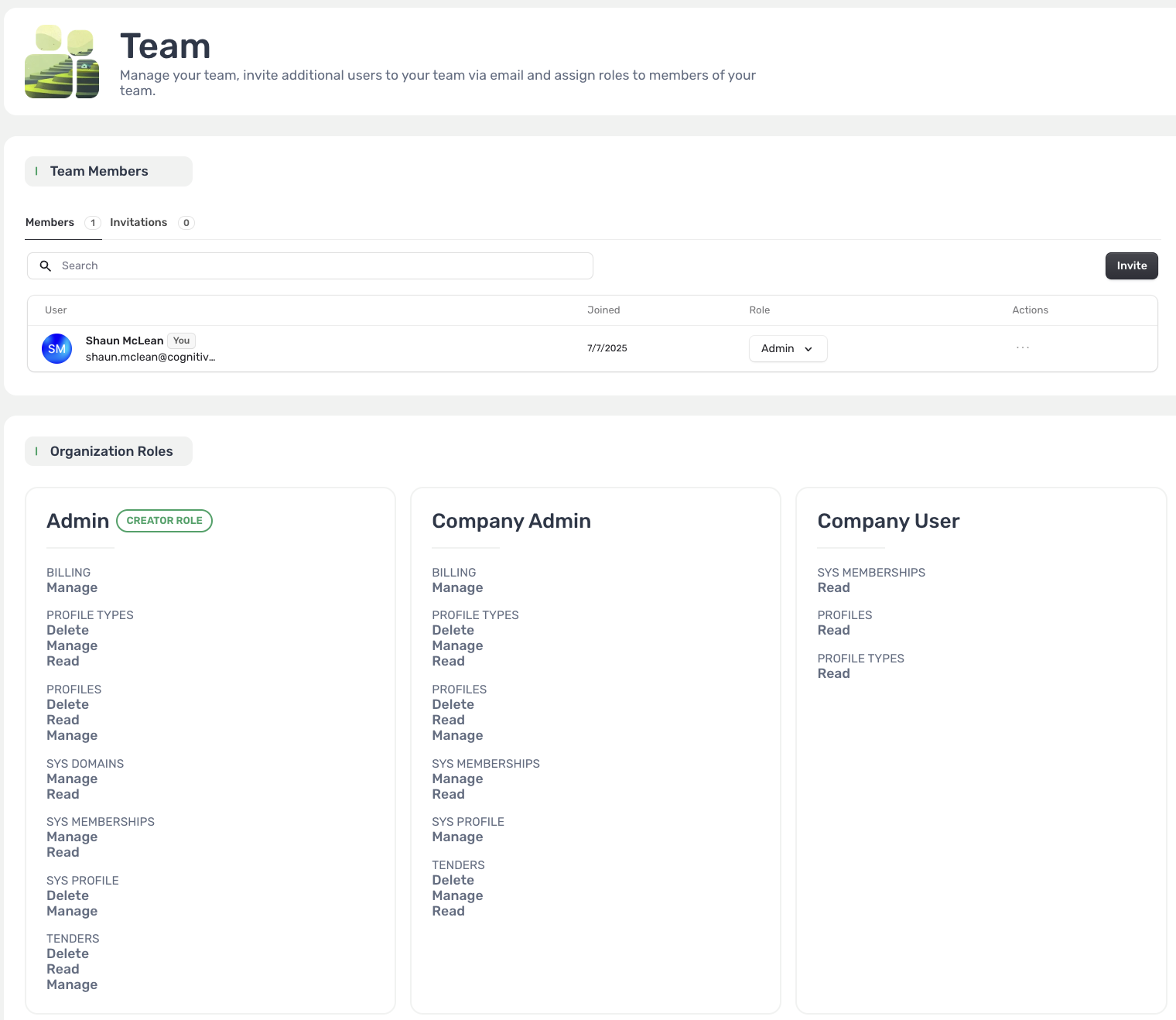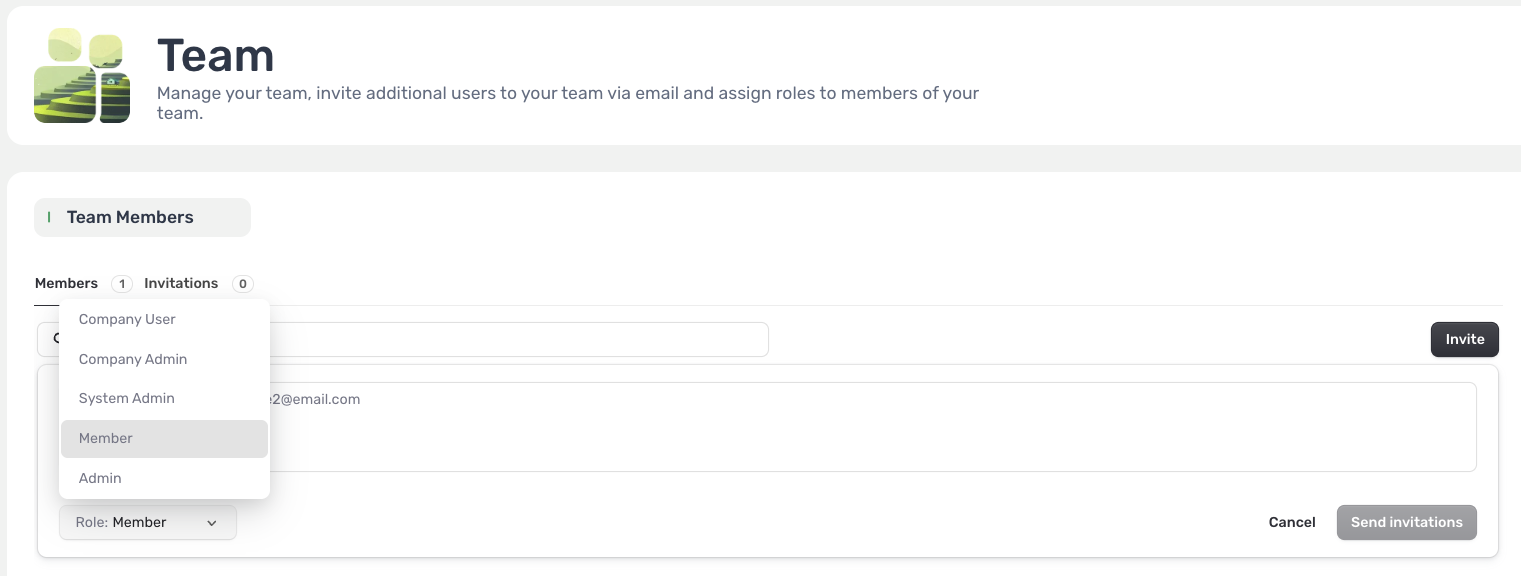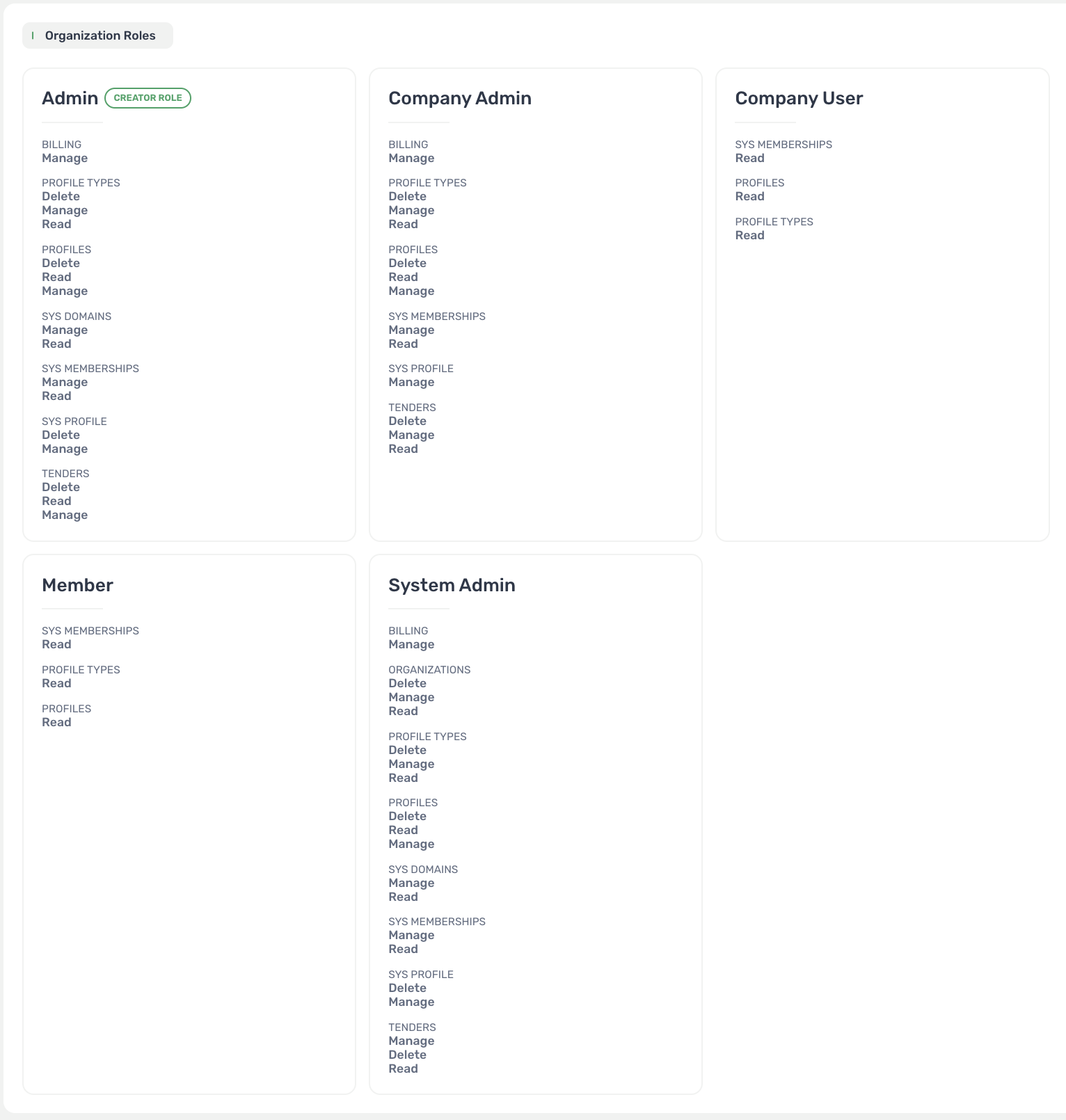Team Management Overview
Aetheron Response provides comprehensive team management features that allow you to invite team members, assign roles, and control access to different platform features. This ensures proper collaboration while maintaining security and appropriate access levels.
What is Team Management?
Purpose of Team Features
Team management enables organisations to:
- Collaborate effectively: Multiple team members can work on tenders together
- Control access: Different roles have appropriate permissions for their responsibilities
- Maintain security: Sensitive features are restricted to authorised users
- Scale operations: Add team members as your tendering activities grow
Key Team Management Features
- User invitations: Invite team members via email
- Role-based access: Assign specific roles with predefined permissions
- Permission control: Granular control over what team members can access
- Member management: Add, remove, and modify team member access

Accessing Team Management
Navigation to Team Section
- Log into your Aetheron Response account
- Navigate to "Team" from the main dashboard menu
- You'll see the Team management interface
Team Management Interface
The team page displays:
- Team description: Overview of team management capabilities
- Team Members section: List of current team members
- Organisation Roles section: Available roles and their permissions
- Invitation management: Tools to invite new members
Team Members Section
Current Team Members
The Team Members section shows:
- Member count: Total number of team members (e.g., "Members 1")
- Invitations count: Pending invitations (e.g., "Invitations 0")
- Search functionality: Find specific team members
- Invite button: Add new team members

Member Information Display
For each team member, you can see:
- Profile picture: User avatar or initials
- Name and email: Full name and email address
- Join date: When the member joined the team
- Current role: Assigned role (Admin, Company Admin, etc.)
- Actions: Options to modify member access
Member Management Actions
Available actions for team members:
- Change role: Modify member's permission level
- Remove member: Remove access from team
- View details: See member's activity and permissions
Organisation Roles and Permissions
Available Roles
Aetheron Response provides several predefined roles that cannot be modified or customised. These roles are displayed in the Organisation Roles section for your reference:

Admin (Creator Role)
Highest level access with full platform control:
- Billing: Manage subscription and billing
- Profile Types: Delete, Manage, Read profile type configurations
- Profiles: Delete, Manage, Read company profiles
- SYS Domains: Delete, Manage, Read system domains
- SYS Memberships: Manage, Read system memberships
- Tenders: Delete, Manage, Read all tender activities
Company Admin
Administrative access for company-level functions:
- Billing: Manage company billing
- Profile Types: Delete, Manage, Read
- Profiles: Delete, Manage, Read
- SYS Memberships: Manage, Read
- SYS Profile: Manage, Read
- Tenders: Delete, Manage, Read
Company User
Standard user access for daily operations:
- SYS Memberships: Read only
- Profiles: Read only
- Profile Types: Read only
- Tenders: Read only
Member
Basic access for viewing and limited participation:
- SYS Memberships: Read only
- Profile Types: Read only
- Profiles: Read only
System Admin
Technical administrative access with system-level permissions:
- Billing: Manage
- Organisations: Delete, Manage, Read
- Profile Types: Delete, Manage, Read
- Profiles: Delete, Manage, Read
- SYS Domains: Manage, Read
- SYS Memberships: Manage, Read
- SYS Profile: Delete, Manage, Read
- Tenders: Delete, Manage, Read
How the Organisation Roles Section Works
The Organisation Roles section on the team page serves as a reference guide to help you understand:
- What each role can do: View the specific permissions for each role
- Role comparison: Compare different roles to choose the right one for team members
- Permission understanding: Understand what access level each role provides
- Assignment guidance: Make informed decisions when inviting or managing team members
Important: This section is for information only - you cannot edit or modify the roles or their permissions. You can only assign these predefined roles to team members based on your own permissions.
Permission Categories
Understanding Permission Levels
Each role has specific permissions across different platform areas:
Billing Permissions
- Manage: Full control over billing, subscriptions, and payments
- Read: View billing information and usage
Profile and Profile Types
- Delete: Remove profiles and profile configurations
- Manage: Create, edit, and modify profiles
- Read: View profile information
System Functions
- SYS Domains: System domain management
- SYS Memberships: Team membership control
- SYS Profile: System-level profile management
- Organisations: Organisation-wide settings
Tender Operations
- Delete: Remove tenders and tender responses
- Manage: Create, edit, and control tender processes
- Read: View tender information and responses
Role Selection Guidelines
Choose Admin for:
- Organisation owners: Primary account holders
- Senior management: Those requiring full platform access
- IT administrators: Technical staff managing system settings
Choose Company Admin for:
- Department heads: Leaders managing company tender activities
- Project managers: Those overseeing multiple tender projects
- Operations managers: Staff handling day-to-day tender operations
Choose Company User for:
- Tender writers: Staff creating and editing tender content
- Subject matter experts: Contributors to specific tender sections
- Reviewers: Those reviewing and approving tender content
Choose Member for:
- Occasional contributors: Limited involvement in tender processes
- External consultants: Temporary access for specific projects
- Trainees: New staff learning the platform
Best Practices for Team Management
Role Assignment Strategy
- Principle of least privilege: Assign minimum necessary permissions
- Regular review: Periodically assess role appropriateness
- Clear responsibilities: Ensure team members understand their access levels
- Documentation: Maintain records of who has what access
Security Considerations
- Regular audits: Review team member access quarterly
- Prompt removal: Remove access immediately when team members leave
- Role transitions: Update roles when responsibilities change
- Access monitoring: Track who accesses sensitive information
Team Collaboration
- Clear workflows: Establish processes for team tender collaboration
- Communication: Ensure team members know their roles in tender processes
- Training: Provide appropriate training for each role level
- Support: Offer guidance on using platform features effectively
Getting Started with Team Management
Initial Team Setup
- Review current access: Assess who needs platform access
- Plan role structure: Determine appropriate roles for team members
- Invite essential members: Start with core team members
- Configure permissions: Ensure roles match responsibilities
- Establish workflows: Define how the team will collaborate on tenders
Scaling Your Team
As your organisation grows:
- Add members gradually: Ensure proper onboarding for each new user
- Maintain role consistency: Use established role definitions
- Monitor usage: Track how team members use the platform
- Adjust as needed: Modify roles and permissions based on experience
Team Management Maintenance
- Regular reviews: Monthly assessment of team composition
- Permission updates: Adjust access as roles change
- Performance monitoring: Ensure team efficiency in tender processes
- Feedback collection: Gather input from team members on access needs
Troubleshooting Team Issues
Common Team Management Problems
- Access issues: Team members can't access the needed features
- Permission conflicts: Unclear role boundaries
- Invitation problems: New members not receiving invitations
- Role confusion: Team members are unsure of their permissions
Updated 24 days ago
